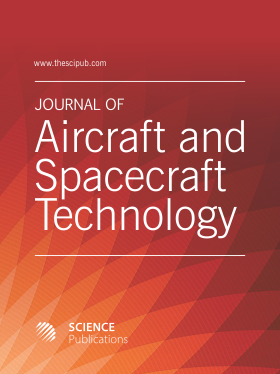A First-Class Ticket to the Planet Mars, Please
- 1 Bucharest Polytechnic University, Romania
- 2 Second University of Naples, Italy
- 3 American University of Ras Al Khaimah, United Arab Emirates
- 4 NTNU, Norway
Abstract
The paper presents some aspects related to the current stage in the aerospace industry, referring to the current possibilities of moving in space. The main problem that has kept mankind for so many millennia has been the less speed of movement, but also the difficult exit into outer space. For a ship to be able to defeat gravitational forces and go out into outer space, leaving the planet and the earth's atmosphere and to place itself in orbit, the required minimum travel speed is about 28,476 km/h. In order to leave and the Earth orbit on which a ship is moving like a satellite, a ship needs a minimum speed of 40000 km/h. For a long time, such a speed was very difficult to achieve. Even with a huge amount of chemical fuel on board, a rocket had to throw a lot of rocket stages (modules) in an attempt to get out of the ground. Besides the huge fuel consumption (not to mention the huge pollution produced), the ship also encounters various technical difficulties, which most often cause it to abandon and return (the bathtub) and to the ground. The shuttle has attempted to modify something from this difficult start, coming out of the atmosphere, gradually planted, like a plane and not upright like a rocket. They, therefore, had the advantage of a lower mass, lower fuel consumption and resistance to advancing by making them more similar to planes. In addition, such a ship could emerge and return to the terrestrial space several times and not just as the missiles did. The shuttle was a step forward for humanity, even though it was still moving slowly. Then came the ions (gas) reactors for spatial ships, which managed to accelerate ships at increasing speeds. Of all spacecraft that were launched by humans, there were some that had an impressive speed. The current record is owned by the New Horizons mission to Pluto and the Kuiper belt. Launched in 2006 by NASA, the spacecraft had a speed of 58,536 kilometers per hour, but it has reached over 160,000 kilometers per hour on its route. For comparison, Voyager 1 currently has a speed of 61,200 kilometers per hour. Regarding pure heliocentric speed, speed recorders are the Helios I and II probes, which were launched in 1974 and 1976 and reached speeds of 252,000 kilometers per hour. The Juno mission to Jupiter will send a spacecraft that will reach the speed of over 250,000 kilometers per hour. And in 2018, a new NASA mission called Solar Probe Plus will launch a ship that will travel at an astonishing speed of 720,000 kilometers per hour. This would mean the probe could travel from Earth to the Moon in about half an hour and the Earth-Mars distance in about 10 days instead of five months.
DOI: https://doi.org/10.3844/jastsp.2017.272.281

- 5,306 Views
- 2,644 Downloads
- 3 Citations
Download
Keywords
- NASA
- Moving in Space
- Aerospace
- Aeronautics
- Energy
